Section #10 - A Manifest Destiny craze results in the Texas Annexation and a victorious war with Mexico
Chapter 130: General Scott Conquers Mexico City And Ends The War
August 20, 1847
Fighting Resumes At Churubusco In The Valley Of Mexico
General Scott’s pause after his victories at Vera Cruz and Cerro Gordo allows time for envoy Nicholas Trist to negotiate for peace, and for him to add more men before moving further inland toward his next goal, Mexico City.
The first contingent of 2,000 troops arrives in July, followed soon by another 2,400, under Brigadier General Franklin Pierce. On August 10, 1847, Scott decides that he is ready, and his total force of 10,700 men – half new untested volunteers – heads west.
Soon they are cresting the mountains east of the capital where they come upon a dazzling landscape in the valley below. There, at 7250 feet above sea level, lays the city built by the Aztecs in 1325 and ruled by them until Cortez overthrows Montezuma in 1519. The historian, Horatio Ladd, in his 1883 chronicle of the war, describes the sight:
A few miles beyond Rio Frio they came suddenly upon an enchanting vision of the valley of Mexico. It was a dazzling picture of earthly beauty. The rich spring verdure of the plains dotted with the white walls of villages and haciendas, the silvery lines of mountain streams, the blue surfaces of lakes whose shores, winding about the base of mountains, stretched far into the green valleys and the hills rising to lofty ranges white with snow and glistening beneath the soft blue sky, all presented a scene that made the romance of Spanish conquests in the days of Montezuma appear like the truths of sober history.
Scott now must decide how he plans to conquer the capital city.
By August 16 he has reconnoitered the direct approach from the east over the National Road through El Penon Viejo, and concluded that it will leave him with only one line of assault on the capital. So he settles instead on a difficult 27-mile march heading south of Lake Chalcothen east along the Acapulco Road. He intends to bypass the Mexican defenses at San Antonio, march around the Padregal lava fields to the town of Contreras, and attack north from there.
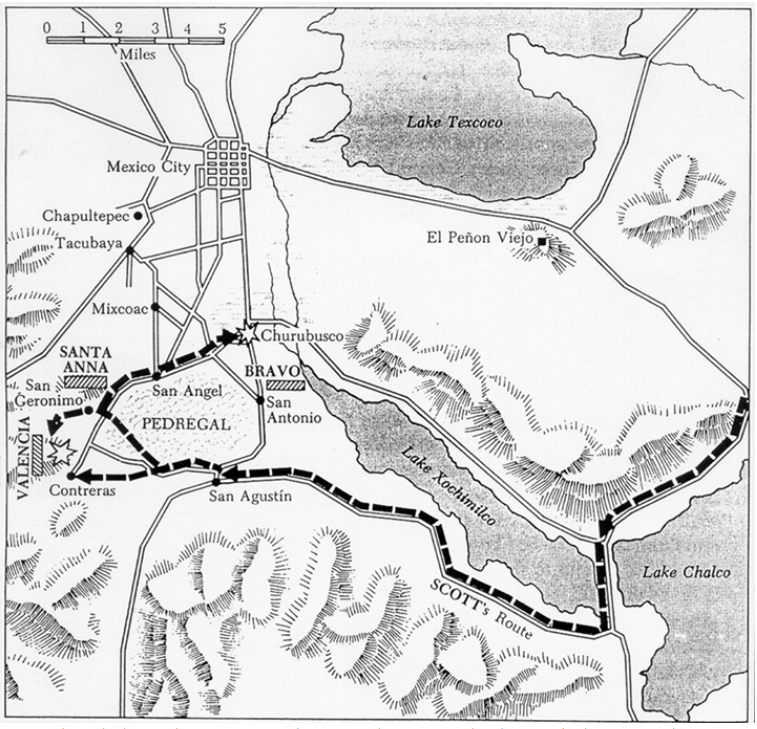
Santa Anna, however, anticipates Scott’s path and intends to attack him along the road from Contreras to Churubusco. He lays out strong positions over the entire route, with General Valencia’s 7,000 men on a steep hill bordering Contreras, his own 11,000 men two miles to the north, General Ruicon with another 6,000 at Churubusco, guarding a river bridge, and General Bravo with 3,000 men above San Antonio.
Once again, as at Cerro Gordo, Santa Anna is confident of victory. His 27,000 soldiers outnumber Scott by 3:1, and they are fighting to protect the capital city of their nation.
But once again, Scott finds a way to outmaneuver and defeat the Mexicans, despite their courageous efforts.
Coming up first against Valencia on August 19, General Persifor Smith’s brigade is beaten back and left in a trapped position at the foot of the Contreras hill. That night Valencia celebrates, passing out brevets along with hard liquor to his troops. As the Mexicans revel, Smith’s engineers find a way out of their trap – a passable ravine that circles to the right of the hill and comes up on Valencia’s rear. At 3AM on the 20th , Smith’s men race up the slopes and a rout ensues. According to Smith, it has “taken just 17 minutes” to clear the Mexicans off the hill and send them scurrying toward Churubusco.
Santa Anna tries to stabilize his troops throughout the day, but to no avail. General William Worth forces his way through San Antonio on the Mexican left and unites with Twiggs and Pillow at Churubusco. They are slowed briefly by stiff resistance from a heavily fortified church convent, but soon break through and seize the key bridge over the Churubusco River.
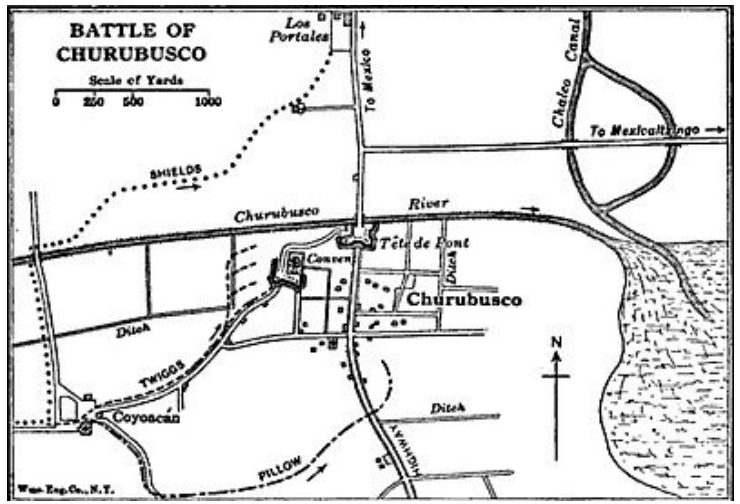
The first line of defense protecting the capital city has been breached by Scott in his three victories on August 20, 1847. American casualties for the day total 120 killed and 816 wounded. The Mexicans suffer 3,250 total casualties, along with 2,627 prisoners.
Four and a half months have elapsed since U.S. forces left Veracruz on their audacious mission. Now, all that’s left is one final push.
But instead of rushing headlong to the capital, Scott turns momentarily cautious. He fears that his army has been fought out at Churubusco, and wants time for his engineers to plot the best approaches into the city.
When he halts, Santa Anna sends emissaries out under a flag of truce to explore an armistice. Buchanan’s man, Twist, joins the talks, and soon the lull in battle reaches two weeks. By then Scott concludes that Santa Anna is simply stalling for time to strengthen his defenses, and he ends the armistice on September 7.
His army is refitted and his strategy laid out. On September 8, 1847, he resumes his advance.
September 8, 1847
The Battles Of Molino Del Rey and Casa de Mata
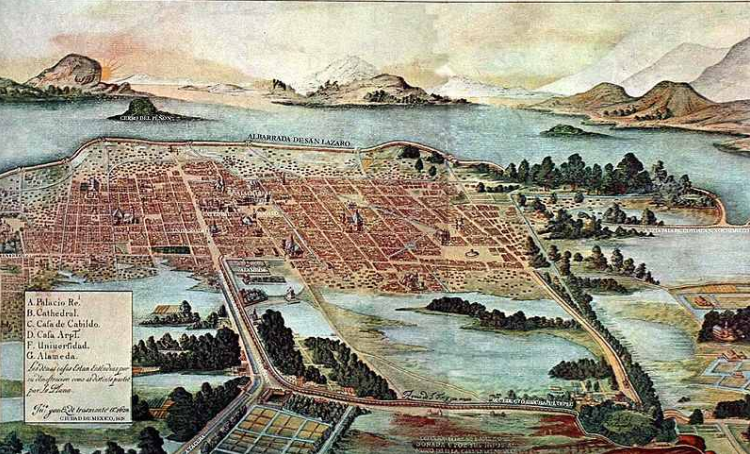
The ancient city now in Scott’s front is built originally on an island just off the western edge of Lake Texcoco. By the late 17th century, the population is expanding and the lake is being drained away to prevent flooding and provide more living space. Eventually, the lake vanishes into marshland, with eight elevated causeways built as routes into the city.
To reach the interior, Scott must first overcome three formidable outposts guarding the entrance to the western causeways – the citadel at Casa de Mata, the Molino del Rey mill and foundry, and the daunting Chapultec Castle, regarded by many as the strongest fort on the North American continent.
A bitter dispute over strategy for attacking the Molino erupts here between Scott and General William Worth, his right hand man going all the way back to the War of 1812. Scott prevails, but Worth never fully forgives him for the carnage that follows.
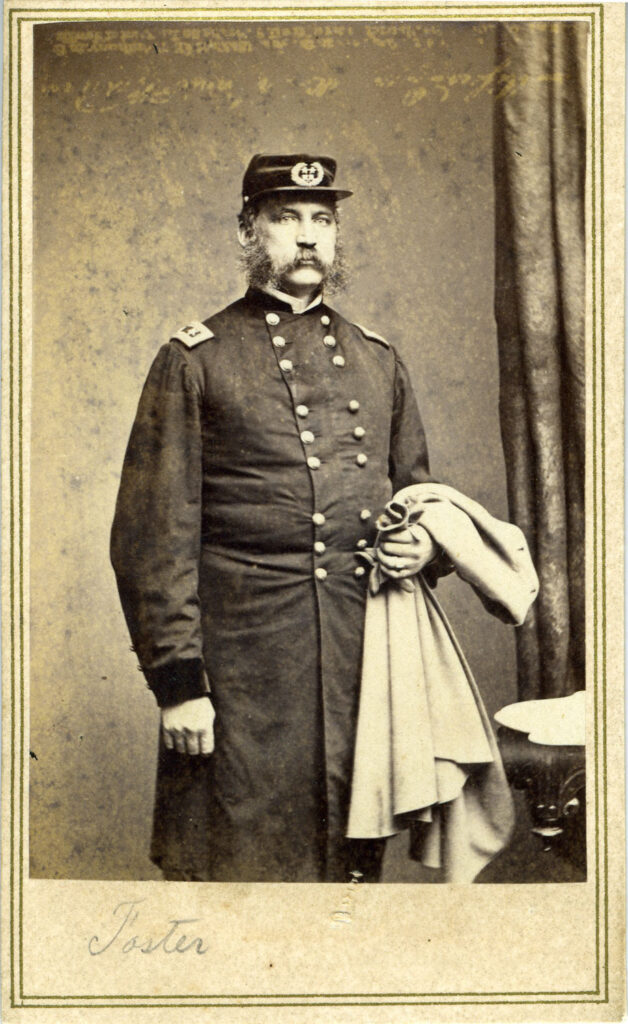
At dawn on September 8, Lt. John Foster leads the first head-on attempt to storm the Molino. This ends in a hail of musket fire and grapeshot that repulses the Americans and leaves Foster lying with a shattered leg on the field. And there he stays for another two hours of sustained violence in what turns out to be one of the bloodiest battles of the war.
The Americans eventually prevail at both the Molino and the Casa de Mata citadel, but at a cost of 729 casualties, including 58 officers. The Mexican losses top 3,000, with Santa Anna’s top two commanders killed outright, General Leon at Molino and General Valderez at de Mata.
September 16, 1847
Assault On Chapultepec Castle And The Halls Of Montezuma
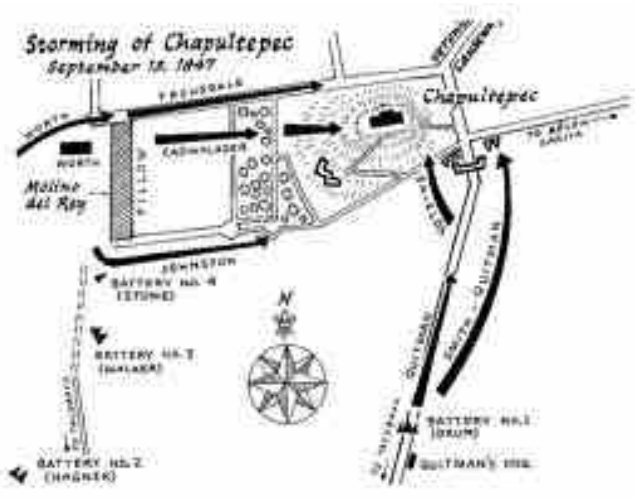
With the Molino secured, Scott decides that he will storm the capitol from two directions. His main attack will come from the west, under General Pillow, along the six foot high causeway leading to the San Cosme (customs house) Gate. Pillow will be supported by infantry units under the Mississippi General, John Quitman, driving from the south against the Belen Gate.
To succeed, Pillow must first pass the Chapultepec Castle, jutting out on a rock ledge 150 feet above the ground, surrounded by walls that are 4 feet thick and 20 feet high. The castle, formerly home to Aztec emperors, is now the site of the Mexican Military Academy, their West Point.
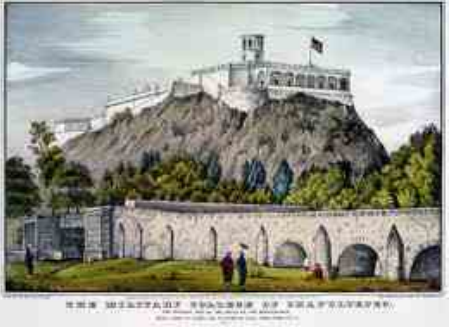
But not even this imposing barrier can hold up under the advanced artillery hardware and engineering tactics that have helped the Americans prevail from one battle to the next.
On September 12, four U.S. batteries, in easy range and well sheltered, begin to reduce the fort’s defenses.
On September 13, as the bombardment continues, the Americans storm Chapultepec.
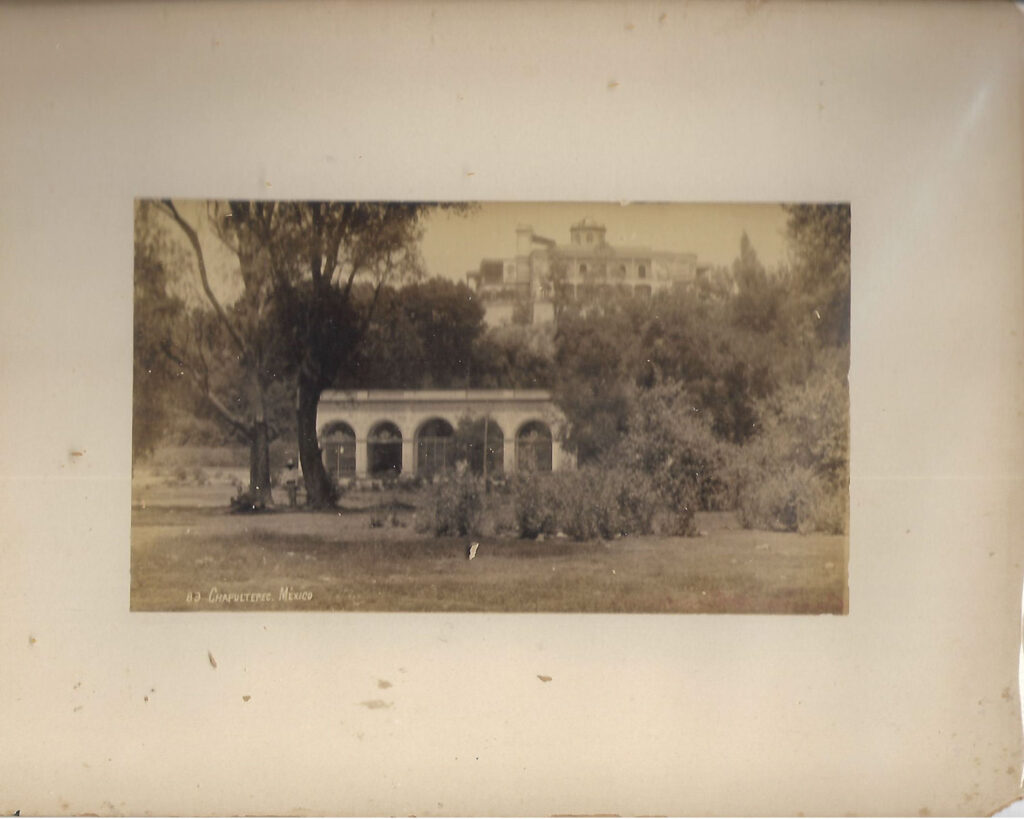
Pillow’s troops race through the Molino grounds and into a cypress grove, where the General falls with a severe wound to his ankle. His men, however, move steadily forward and deploy scaling ladders to begin their ascent of the rocky hill leading to the castle itself. One officer who particularly distinguishes himself in this action is Lt. Tom Jackson, who wins another brevet for his artillery work alongside Captain John Magruder.
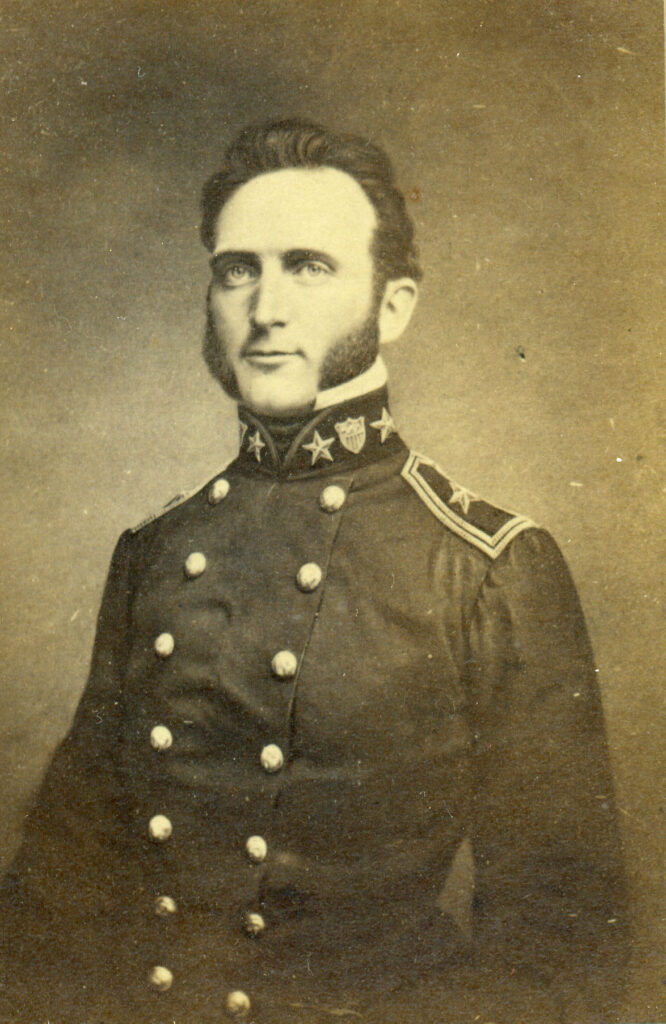
Stonewall (1824-1863)
Pillow’s troops are quickly joined by General Quitman coming up from the other side of the hill. Both contingents encounter fierce resistance, but nothing is about to deny the Americans at this point. By late morning shouts go up across the battlefield as the Stars & Stripes appear on the castle ramparts.
During this brave assault on the castle, a litany of future civil war military heroes have suffered wounds. Lt. PGT Beauregard is hit twice in the action. Major William Loring loses his left arm. Second Lt. James Longstreet goes down with a bullet to his thigh while carrying a regimental flag he hands off to Lt. George Pickett. Others wounded include Lt. Colonel Joseph Johnston, Captains Silas Casey and Magruder, Lts. Innis Palmer, Lewis Armistead, Earl Van Dorn, Isaac Stevens, and John Brannan.
The Mexican troops are both astonished and demoralized by the fall of Chapultepec, and they flee east along the two major causeways toward the central city.
The Americans follow post haste – with Worth picking up the lead for Pillow toward the San Cosme Gate, and Quitman’s forces, under the wounded General James Shields, closing on Belen.
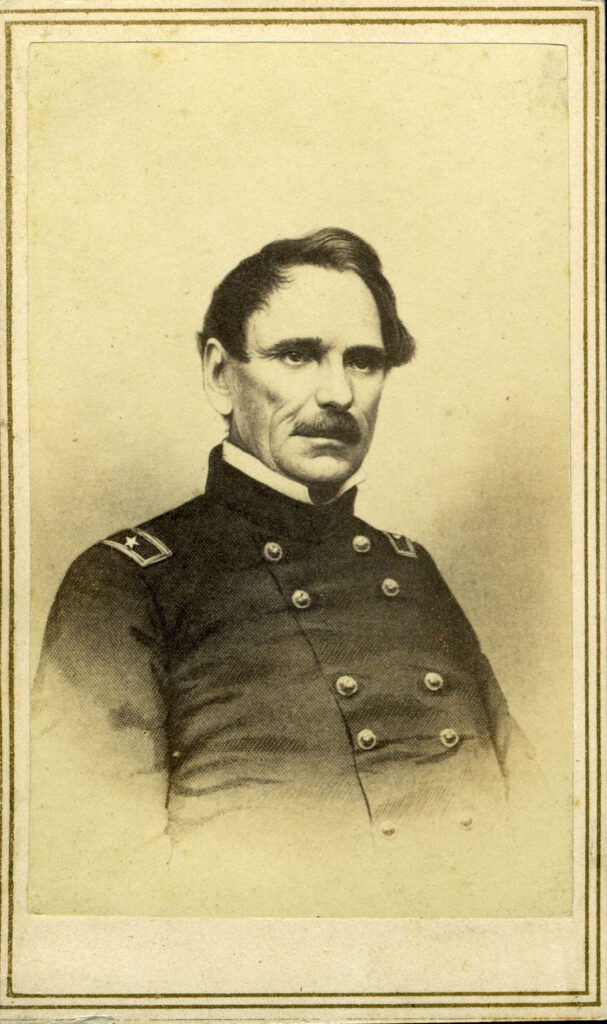
Shields is a hot-headed Irish politician from Springfield, Illinois, who, in 1842, had challenged Abraham Lincoln to duel over a perceived slight. His battle temper is similarly up as he chases after the Mexicans, and he breaks through Belen and into the city proper by 1PM, only to come under heavy fire from the Citadel in the central Plaza. By evening Shields and Quitman are hunkered down and waiting on Scott’s next orders.
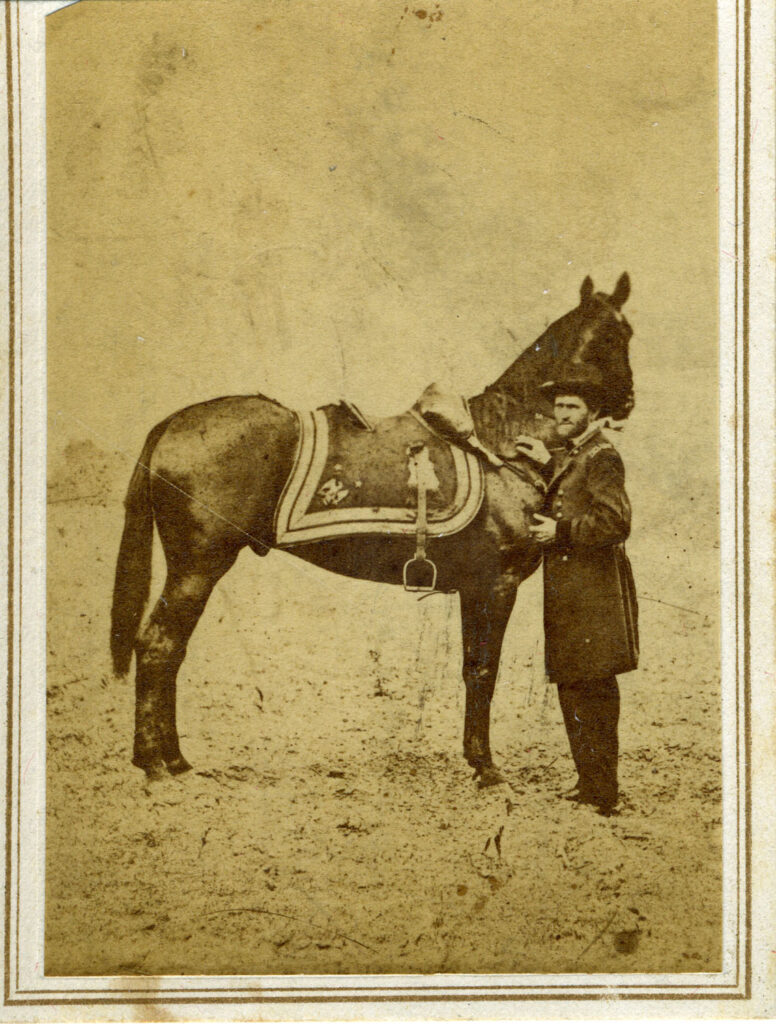
His Horse Cincinnati
Worth’s drive toward San Cosme proves to be much slower going, despite courageous initiatives from men like Second Lieutenant Ulysses S. Grant, who sets up a howitzer in the belfry of a church and scatters defenders in his front. Rearguard skirmishes and sniper fire continue on this causeway throughout the afternoon, and Worth halts his men by 8PM within easy artillery range of his assigned gate.
The scene is now set for the climax of Scott’s campaign to occupy Mexico City, which began on March 9, with the landing at Veracruz.
September 14 opens with the sight of emissaries from the city coming out to meet Scott. They inform him that Santa Anna has resigned his presidency and that the main body of the Mexican army has fled overnight out the backdoor exit along the National Road. They also request that control over the population, some 200,000 strong, be assigned to municipal authorities and the church.
Scott has not come this far to leave the capital in Mexican hands, and he immediately orders his troops forward.